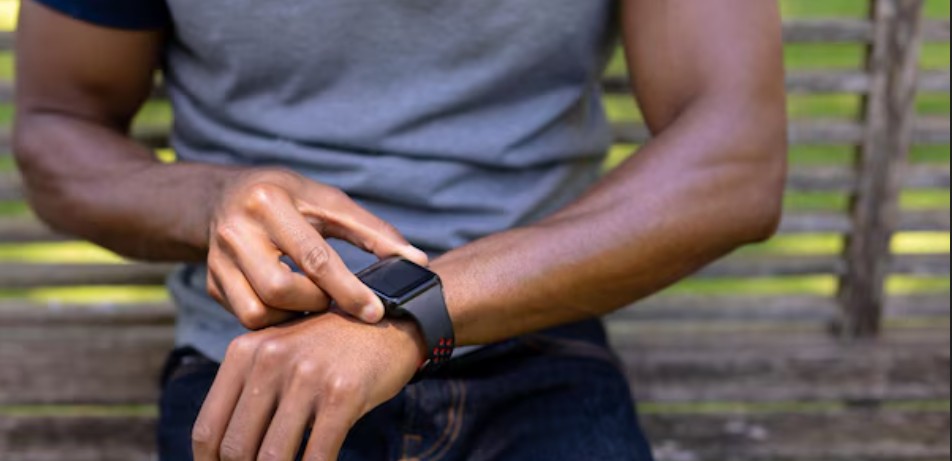How to choose the best smartwatch model for your lifestyle, budget and needs

Once limited to simple timekeeping and alert notifications, smartwatches have evolved into versatile devices, offering health monitoring, productivity tools, and even customisable fashion statements, all from your wrist.
As wearable technology continues to merge fashion with functionality, smartwatches have solidified their place as one of today’s most essential digital accessories.
Once limited to simple timekeeping and alert notifications, smartwatches have evolved into versatile devices, offering health monitoring, productivity tools, and even customisable fashion statements, all from your wrist.
More To Read
- Apple poised to overtake Samsung as world’s largest smartphone maker
- Apple watch battery draining before day’s end? Experts reveal 7 easy ways to fix it
- Apple Watch could soon feature touch ID in biometric breakthrough
- Snapchat messaging is now on Apple Watch
- Apple could soon allow users to scroll using their eyes on Vision Pro Headset
- Beginner’s guide: Connecting your Apple watch to an Android phone
With countless models and features flooding the market, choosing the right smartwatch can feel overwhelming. However, industry experts suggest that the process becomes easier when you focus on five key factors: purpose, compatibility, features, design, and budget.
1. Define your purpose
Before diving into specifications, start with your primary reason for buying a smartwatch. Is it for fitness and health tracking? Staying connected on the go? Expanding your tech ecosystem? Or simply upgrading your style?
“Most consumers jump into specifications without first asking what they truly want from a smartwatch,” says Bilal Qureshi, a tech entrepreneur at the BBS Mall.
Typical smartwatch users fall into four groups:
Fitness enthusiasts – For workout tracking and wellness insights, devices like the Garmin Forerunner, Apple Watch Ultra, and Fitbit Charge 6 offer metrics such as heart rate, sleep tracking, SpO₂, ECG, and GPS.
Busy professionals – For staying connected without constantly reaching for your phone, models like the Apple Watch Series 9, Samsung Galaxy Watch6, and Google Pixel Watch 2 provide voice assistants, call and message alerts, app syncing, and calendar integration.
Style-conscious users – Fashion-focused options from Fossil, Michael Kors, and Garmin’s Vivomove series combine sleek design with essential smart features, suitable for both boardrooms and boutiques.
Ecosystem builders – For those deeply invested in a brand’s tech ecosystem, a smartwatch can be the next logical addition. Apple Watch pairs seamlessly with iPhone, AirPods, MacBook, and HomeKit; Samsung Galaxy Watch integrates with Galaxy phones, Buds, SmartThings, and Samsung Health; Google Pixel Watch works best with Pixel phones, Nest devices, Google Assistant, and the wider Android/Google ecosystem.
“If you already use products from one brand, expanding within that ecosystem often unlocks features you wouldn’t get with a cross-platform setup,” Bilal notes.
2. Consider battery life
Battery performance varies widely. Rugged devices like the Garmin Fenix 7 and Fitbit Versa 4 can last a week or more, while feature-packed models like the Apple Watch often require daily charging.
3. Check the operating system and compatibility
A smartwatch’s operating system greatly influences your experience—both in appearance and functionality. Compatibility with your phone is crucial.
Apple Watch – Best for iPhone users, integrating seamlessly with iMessage, Siri, and Apple Pay.
Wear OS by Google – Found in Samsung, Fossil, and others; works with Android and iOS but performs best on Android.
Fitbit and Garmin – Use proprietary systems with excellent fitness features and long battery life, though with fewer apps.
Oraimo – Uses a lightweight custom OS focusing on core functions like fitness tracking, call/message alerts, music control, and long battery life.
Models such as Oraimo Watch 4 Plus, OSW-32, and OSW-16 offer affordability, 7–15 days of battery life, water resistance, and stylish designs.
“Oraimo hits the sweet spot for users who want a polished, stylish smartwatch without paying flagship prices. It’s ideal for students, new users, and those in budget-conscious markets.”
4. Identify must-have features
Fitness – Built-in GPS, heart rate monitoring, step tracking, and workout support (yoga, cycling, swimming).
Health – ECG, SpO₂ monitoring, stress management, skin temperature tracking.
Smart tools – Notifications, voice assistants, NFC for payments, music controls.
Durability – 5 ATM or higher for swimming; rugged models like Garmin Instinct meet military-grade standards.
Comfort also matters, especially for daily wear. Watches come in various sizes, materials (aluminium, stainless steel, titanium), and straps (leather, silicone, metal, bead). Many allow customisable watch faces and accessories.
“I always think about what you’ll wear it with,” says Erick Kariuki. “I have one strap for the gym and another for events. That flexibility is part of the appeal.”
5. Set your budget
Smartwatch prices in Kenya range from Sh4,530 for basic fitness trackers to over Sh200,000 for flagship models.
Price guide:
Sh4,530 – 15,000 – Basic fitness trackers, step counters, call/text alerts.
Sh15,000 – 35,000 – Full-colour displays, health sensors, basic smart features.
Sh35,000 – 70,000+ – Premium materials, ECG/GPS, app support, mobile payments.
Sh70,000 – 200,000+ – Flagship models with advanced health tools, LTE, rugged builds.
Factor in extra costs for subscriptions, replacement bands, or accessories.
Your smartwatch can be more than just a timepiece—it can support your health, schedule, and style. The right choice depends on your needs.
“Don’t just buy what’s trending,” Qureshi advises. “Buy what fits your life.”
Smartwatch buyer’s checklist:
What’s your main use? (fitness, work, fashion)
Is it compatible with your phone?
Which features are non-negotiable?
Do you prioritise long battery life or advanced functions?
Will you wear it daily, for work, or during workouts?
What’s your budget, including accessories or subscriptions?
Top Stories Today












































